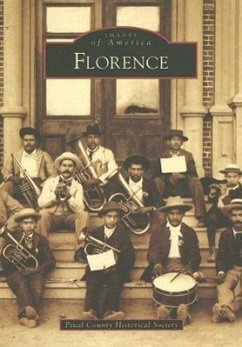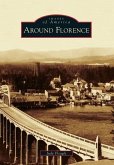In 1866, Florence rose on the banks of the Gila River in south central Arizona. People came from near and far to this early settlement in the Arizona Territory, joining the Native Americans and Mexican farmers already established there. The town boomed with the discovery of a silver mine nearby. Politicians and lawyers followed when Florence became the seat of Pinal County in 1875, and when the Territorial Prison arrived in 1909, the community's future no longer depended upon the fickle mining business. World War II brought a prisoner-ofwar camp, and popular youth rodeos added to Florence's remarkable character and history. In the 1970s, citizens began a model effort to preserve their community's legacy and remaining historic structures. The major growth that early Florence anticipated is finally occurring all around the town, bringing change once again.
Hinweis: Dieser Artikel kann nur an eine deutsche Lieferadresse ausgeliefert werden.
Hinweis: Dieser Artikel kann nur an eine deutsche Lieferadresse ausgeliefert werden.








